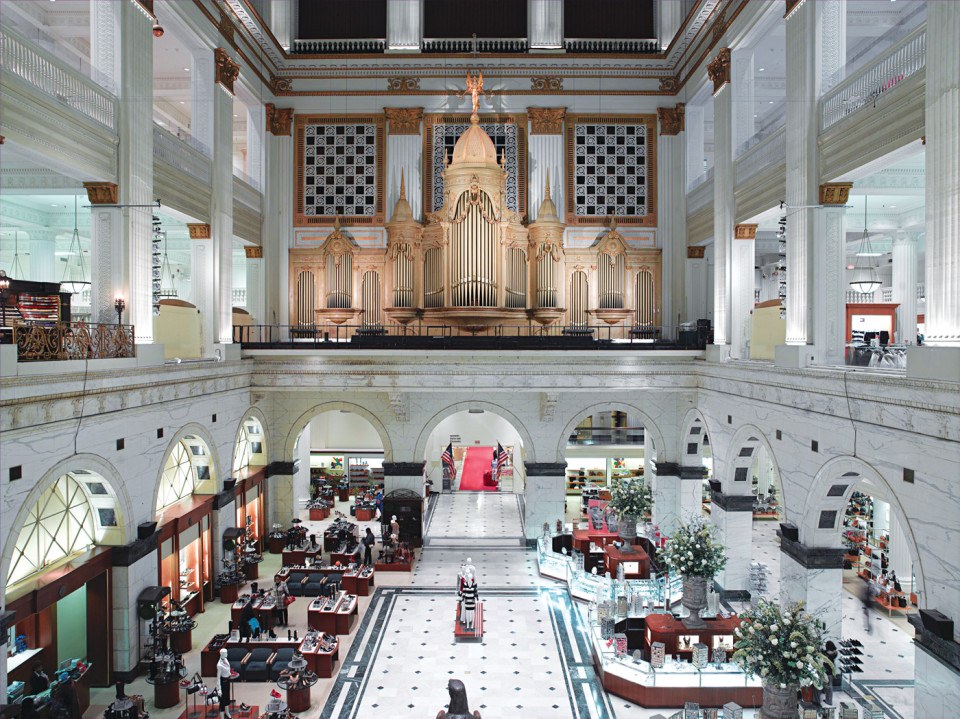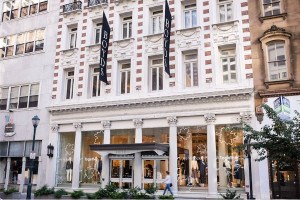What Will Become of the Wanamaker Organ?
With the Center City Macy’s closing, the fate of the prestigious instrument remains in question.

The Wanamaker Organ / Photograph by Carol M. Highsmith/Buyenlarge/Getty Images
Soon after 2024 became 2025, we learned some troubling but not exactly shocking news: The Macy’s store at 1300 Market Street will be closing. It’s not just Philadelphia — Macy’s announced in December that the beleaguered chain would be shuttering some 150 underperforming stores nationwide by 2026. And in January, the kill list was revealed to contain the Center City store, a location plagued by dwindling crowds and unparalleled amounts of shoplifting. But what’s different about the doomed Macy’s shops in, say, Lafayette, Louisiana, and Flint, Michigan, is that they don’t contain the Wanamaker Organ, whose future is now in question.
It’s likely that you think about the Wanamaker Organ only between Thanksgiving and New Year’s Eve, when it takes part, along with tens of thousands of lights and the voice of Julie Andrews, in the annual Macy’s (née Wanamaker’s) Christmas show, which has (well, had) been a beloved Philadelphia institution since 1956. But the Wanamaker Organ isn’t just some keyboard used to play Christmas carols for the delight of the throngs of people who pack into the department store’s seven-story Grand Court for one month each year. The organ is a piece of music history.
The Wanamaker Organ is the largest fully operational pipe organ on the planet. The instrument boasts 28,750 pipes. It is, in a word, massive — and massive-sounding — and nothing short of magnificent. A true musical wonder.
The organ didn’t originally belong to Philadelphia. It was built for the 1904 World’s Fair in St. Louis, back when the U.S. still had World’s Fairs, and thereafter wound up gathering dust in a warehouse until wealthy Philadelphia entrepreneur John Wanamaker rescued it for his then-under-development eponymous department store, figuring its presence would draw shoppers and give him a competitive edge. More than a dozen freight cars lugged the organ from St. Louis to Philadelphia. And after workers toiled for two years to install it, the organ made its debut in 1911. Yet Wanamaker just wasn’t satisfied. He deemed the sound simply not big enough for the space, so he naturally built his own organ factory, hired experts, and added more and more pipes.
The organ was a huge hit, billed as “the greatest organ in the world.” Families huddled around their living room RCA Radiolas to listen to live recital broadcasts. And the best organists from around the globe traveled to Philadelphia for their chance to make music on it. Any credible ranking of the best pipe organs in the world — yes, such things are ranked — includes the Wanamaker Organ at or near the top.
So what’s to become of this treasure valued at close to $80 million? The New York-based development corporation that owns 1300 Market Street issued a statement in January claiming that it is “committed to the preservation of the organ,” but exactly what that means isn’t certain. Plus, we’ve learned over the years not to take bottom-line-focused developers at their word. Still, we’re proceeding with cautious optimism.
My suggestion for you: Plan a trip to Macy’s as soon as you read this. Sure, you can probably find stellar clearance deals. But the real attraction should be the twice-daily 45-minute recitals on the Wanamaker Organ that run Monday through Saturday. At least for now.
Published as “Pipe Dreams” in the March 2025 issue of Philadelphia magazine.


